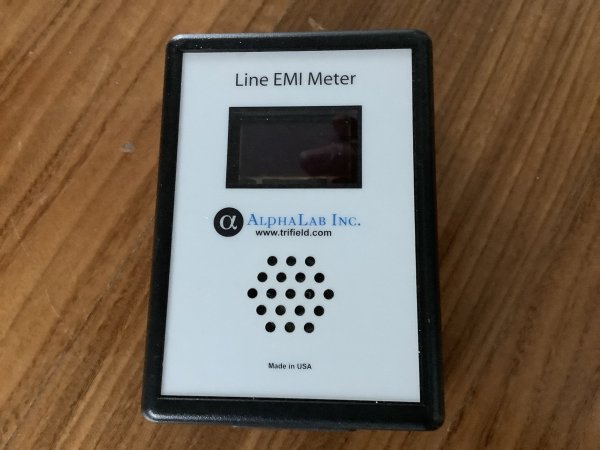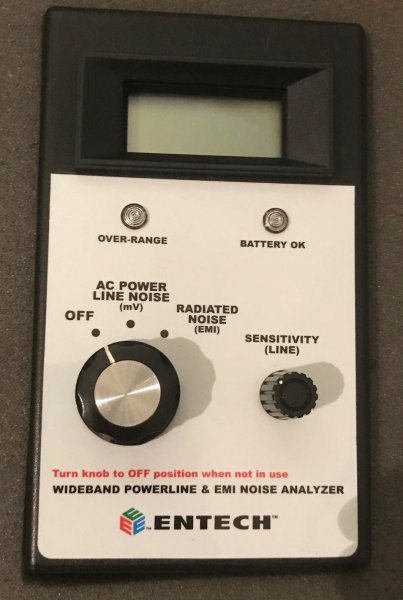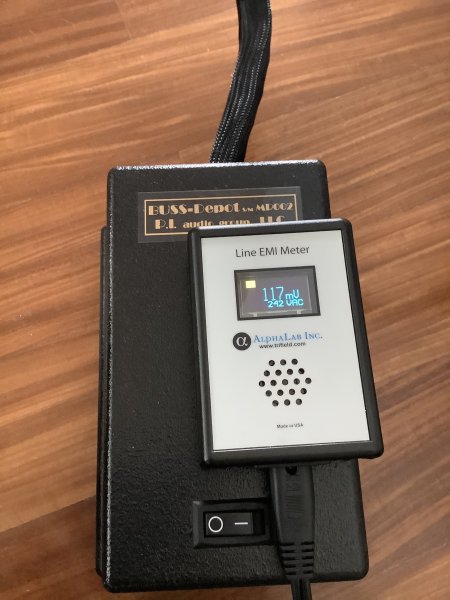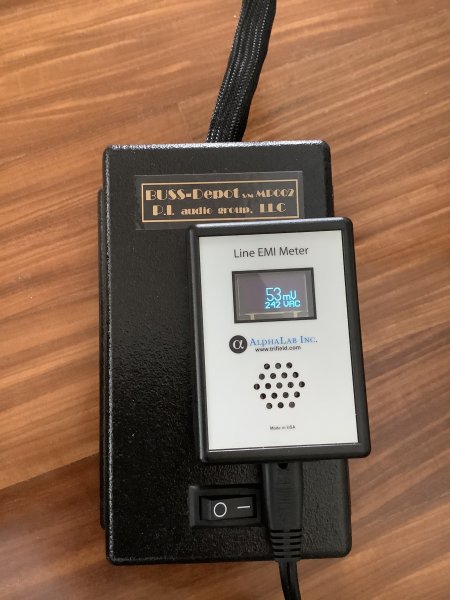Grounding Schemes
As time went on, more and more of the components I used had earth-grounded three-prong power plugs. In addition, with passing years the amount of RFI and EMI in the atmosphere and on the power line continued to increase as computers, Wi-Fi, cell phones, cable TV, satellite TV and just general industry proliferated.
The movement toward more digital audio and video components undoubtedly also produced larger amounts of high frequency electrical noise on the power line and elsewhere. I remember my experience with the first DAC I ever purchased, a Theta Generation III, which produced so much RFI that it wiped out the TV reception on all channels below UHF received by my TV antenna mounted about 20 feet away in the attic above my listening room—and that was before 1990 when I moved into the house with the dedicated audio room and power system. Needless to say, I sold that Theta, but even other one-box CD players seemed to produce some visible distortion of VHF TV channels received by my antenna.
One question I grappled with was whether to "cheat" any of those earth grounds on audio equipment for best sound and, if so, which ones. Classic grounding theory calls for star-grounding a system to a single earth ground back at the electrical service. But by this time, based on my experiments and experience, I'd grown skeptical enough of accepted electrical practices to listen rather than just follow formulas in my attempt to get closer to that reference sound. About that time I wrote an article for The Stereo Times, "
A Well-Grounded Education" which explains theory, my experiments, and my findings, which I won't rehash here.
Mondial MAGIC: The Remedy for Cable-TV-Induced System Hum
One particular modern source of electrical noise, Cable-TV-induced hum, does have a complete and easy low-cost solution. Back around 2005, 60 – 120 Hz hum on all audio/video system inputs where a cable TV is connected to any system component was a recognized problem with some cable TV providers. It is much less common now that cable is distributed in many USA areas via fiber optic cable rather than coax. It's caused by a difference in grounding potential between the cable coax and the rest of your system grounds. There were a few isolation boxes on the market aimed at fixing this sort of problem. I used to use the one marketed by Mondial (then Klipsch) known as the Mondial Antenna Ground Isolation Circuit or "MAGIC" box in the USA. It did in fact work like magic to eliminate such cable-TV-caused problems. I no longer have the problem and no longer use that isolation box. But if you still face such a problem, you can find used units on eBay, I'm sure.
DNM HFTNs
If you happen to own DNM interconnects and/or speakers cables, adding these
HFTN devices will further cleanse and clarify the sound you are hearing. They won't counteract the lightweight bass of such cables and interconnects, but they will further clean up the sound in the way DNM cables can seem to. They are a worthwhile addition if you've already made the investment in DNM cables and want to stick with them. But the HFTNs, while fully compatible with the EVS Ground Enhancers discussed next, make a relatively small improvement in the sound and the price is more expensive by a factor of 10.
Electronic Visionary Systems (EVS) Grond Enhancers
I've written about the
EVS Ground Enhancers in other discussions in Tom's Corner
here and a bit more
here, so I won't rehash my description in this thread. Suffice it to say that I attached these small, inexpensive devices to most every component in my system for over a decade, both at my former house with the basement audio room and in my current home's audio room system. They are most beneficial when attached to the speaker binding post inputs, next most effective on the amp binding post outputs, but adding them to an unused input or output of each component or attached to a grounding screw on a component usually further enhances the positive effects. Most all aspects of the reproduced sound seem at least a little better, with increased blackness of background, more naturally bass-weighted tonal balance, and increased audibility of small details while simultaneously significantly reducing perceived brightness, being particularly significant.
The only downside of these devices is a slight—and I do mean
slight—truncation of high level dynamics, most noticeable on piano transients where perhaps the tiniest smidge of added grunge could also be noted. I lived with this known issue for a decade because of the many salutary benefits of these devices and because, in my subjective evaluation, the negative effects were truly tiny compared to the benefits.
But within the last few months I decided to re-evaluate the effect of the Ground Enhancers in light of the fact that my system is totally different these days since I last checked their effect. Lo and behold, while I definitely still preferred certain aspects of the presentation (more natural tonal balance, less brightness) with the Ground Enhancers, dynamics seemed to be unleashed and the system just sounded more "relaxed" without them. Removing the Ground Enhancers led to the discovery (or I should say re-discovery) of the goodness of another old friend, the . . . .
MIT Z-1 Stabilizer (Original Version)
Here we have an oldie, but still exceptionally goodie! This Richard-Marsh-designed unit was greatly loved by HP of The Absolute Sound. It was on his recommendation that I bought one and then two of these original
MIT Z-1 Stabilizer units, which at the time cost about $800 each new. I had the original version which looked like a cream-colored breadbox which nothing plugged into. It had no electrical outlets in it, just a short 3-prong electrical cord. It is best used plugged into one of the outlets on the same circuit feeding your power amplifier.
The operating theory is basically parallel line conditioning via power factor correction and line filtering. Richard Marsh explains the operating theory in an old MIT whitepaper
here.
In my initial years of use of the Z in my old basement room, I learned than one Z-1 worked better than two. Regardless of how I deployed the two Z-1s I had, the effect was never as sonically beneficial as just using one connected to a receptacle which also fed one of my amplifiers. Two seemed somehow to "fight" each other, stretching images and somewhat confusing the soundstage.
Using one, however, brought high frequency hash and brittleness to a new low, creating more filigreed highs, improved all aspects of bass and midrange reproduction, lowered perceived system noise, made the amps sound more powerful, enhanced clarity and the audibility of low-level detail, enhanced the blackness of the background, reduced all sorts of high frequency hash, brittleness, and edge, and expanded the soundstage in all dimensions while more firmly rooting and rounding images on that stage. Using a single Z-1 moved the sound of my basement system closer to that reference sound I heard when turning off the rest of the home's power than any single technique or combination of techniques I'd tried. To a lesser degree, the Z-1 also seemed to improve the sound and video quality of other systems elsewhere in the house, despite it being plugged into the audio system's dedicated electrical system.
But after I discovered the EVS Ground Enhancers, they took top honors in approaching my reference sound. In addition, the combination of the MIT Z-1 Stabilizer and the Ground Enhancers seemed not so good as either separately. Thus, in moments of weakness, I ended up selling first one and then the other MIT Z-1 Stabilizer.
Once I eliminated the EVS Ground Enhancers from my current system in my current home, I thought I'd try the Z-1 again. The original version is not common on the used market. Fortunately, I was able to find one in good shape on e-Bay for $200 and purchased it.
Okay, what can I say? After warm-up/break-in of about 100 hours, this thing, for $200, truly made an incredible improvement to my current system minus the EVS Ground Enhancers—the same kinds of improvements I described for the Z-1 above, but on major steroids! In addition, the slight compression of high-level dynamic range caused by the Ground Enhancers did not occur with the Z-1. As before, the Z-1 also somewhat improves sound and video quality elsewhere in the home. If you can find one, I highly recommend snapping it up . . . that is, unless you want to spend more than 10 times that much to take the next trip with me, the . . .
[Continued below]





